ISSN ONLINE(2319-8753)PRINT(2347-6710)
ISSN ONLINE(2319-8753)PRINT(2347-6710)
V.Barath1, Mrs. P.Anithapriya2
|
| Related article at Pubmed, Scholar Google |
Visit for more related articles at International Journal of Innovative Research in Science, Engineering and Technology
Recent days in this world the population growth is rapidly increasing, so the world has number of aged people. These aged people are living lonely in home or old people home or retirement home and so on. The aged person have many diseases like memory loss, fits and etc., so that they cannot live independently in their home, if they need long life and precious independence they must stay in monitored environment. In this paper, we present the design and development of welfare facility for elders system which is based on wireless sensor network. Here we use sensors for monitoring aged people. If the sensor detecting any abnormality pattern in aged people, the system customary activity will automatically generate and send the text message or E-mail or both to the care giver and family members. Here we use Hidden Markov Model [HMM] for reducing data transmission time to care giver and family members. Also we design the database security which would provide more security to database in controller system. Here we use message digest algorithm [MD5] for providing security to database in controller side. Also display the monitoring status in web page that could take appropriate action by the person who notices it.
Keywords |
| Elder care, sensor network, Text message, Email, web page, HMM algorithm, MD5 algorithm, Health monitoring. |
INTRODUCTION |
| Welfare facilities for elders system concern the provision of health care service to elders. In this world many old people are living lonely, they have much disease. Here we report the design and development of welfare facility for elders system using sensors networks. A sensor is a converter that measures a physical quantity and convert’s it into a signal which can be read by an observer or by an instrument. The sensor networks can be used for several application areas, the application are health care monitoring, area monitoring, air pollution monitoring, water usage monitoring, forest fire monitoring, home monitoring and so on. The sensor networks are design in this paper; here solutions are discussed related to elder’s health care. Nowadays many people are mature, sickness, forgetfulness so they cannot stay long in their home. In developed system provide small longer live to elders, they stay on monitored environment and give up their precious family situation. If these people want to live with their family they need constant monitoring, so that medical assistance can be provided immediately in the time of emergency. By the technology of today, there is a better way for these elder people to resolve this problem and then they can live lonely, instead of being compelled to stay in an aged people’s home, rather than live in a monitored environment. The goal of all the elder care based paper is to provide warning or alert message to care giver or relatives [1].Even so, some of these studies have verified the feasibility of tenuously monitoring person activities at home [5]. A camera based system for home monitoring has not been popular with the old people [6]. |
| In some of the existing system, monitoring of an elder in the home is achieved using various types of sensors, which are centralized in construction and circulated in the region of the home. These sensors capture the activity of the person and collected data is communicates to a tenuously monitoring controller through wireless data transfer techniques. The wireless transfer techniques are used to transfer the data from one node to another node without wire. In this system number of sensors are used include current sensor, kitchen application sensors, cabinet sensors [7], [13]. In this paper we demonstrate the design and development of a welfare facility for elders system based on sensor network. Our vision is providing the alert message to care giver or family relative in minimum amount of time. Model system has been designed and developed. The sensor is detecting the usage of home appliances and detects the elder’s body temperature and collects important information. The purpose is to monitor elder’s regular behavior in around the home. If the elder’s behavior deviates from routine activity then the system will trigger an alarm and automatically it generates and sends warning text message or E-mail or both to caregiver and relative [1].The structure of this paper is as follows. The Section II illustrates the main functionality of proposed system. The Section III illustrates the adopted system architecture. Our implementation result is presented in Section IV. Finally conclusions and future work are discussed in Section V [2]. |
FUNCTIONALITY OVERVIEW |
| A. Bed and Fingertip monitoring |
| Sensors placed under the bed legs; here we used load cell sensors. These sensors are placed under the four bed legs so it will provide monitoring without disturbance to the elders. The sensors are providing monitoring health parameter such as weight. If the elder have some disease at the bed, sensors provide the not stable value. If the elder in normal the sensors provide stable value that is constant monitoring [1]. |
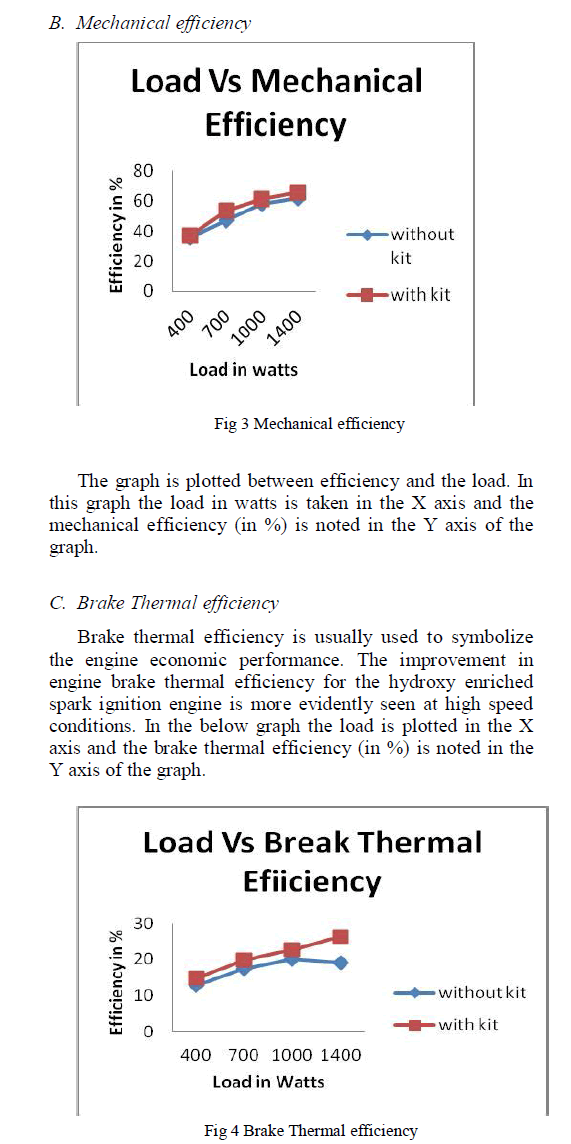 |
| The fingertip sensors are used to fingerprint detection and verification. This sensor has an IR light emitting diode transmitter and IR photo detector acting as the receiver. The IR light passes through the tissues, variations in the volume of blood within the finger modulate the volume of blood within the finger modulate the amount of light incident on the IR detector. Then the sensors are connected to microcontroller [1]. |
| B. Micro controller |
| Micro controllers receive the data from sensors; here we used PIC 16F877A micro controller. It is a eight bit controller, it have a five port they are A, B, C, D, E. The port A have a six bin, it is used for ADC converter also input and output usage. The port B have an eight pin, it is called as memory port. The port C have an eight pin, it is called as serial port used for digital result format. The port D also has an eight pin, one pin is used to alarm and remaining seven pin are used to display purpose. The ports E have three pin used to control the device like restart, read, write. The main advantage of this micro controller it has an inbuilt ADC; the load cell sensors provide very low voltage value, so the system cannot read that value. The ADC converts the analog value in to digital value. In microcontroller receive the analog value and transmit the digital value using ZigBee wireless transmitter. The communication controller receives the data from micro controller through the ZigBee wireless receiver. Controllers have a database [DB] of elder’s regular normal activity data. The received monitoring data is compare with DB data; if the received data is differ from DB data, the system will automatically generate the warning message and send the SMS or Email or both to the caregiver also family members. This information sharing the elders to get feedback or help, receive emotional support, etc. [3] |
SYSTEM ARCHITECTURE |
| In figure 1, the overall system architecture depicted. The figure 1.a shows the transmitter system architecture and the figure 1.b show the receiver system architecture. In transmitter have four miscellaneous nodes; they are sensors, panic button, LCD, ZigBee. The sensors is a converter, it convert the physical data to signal data. The sensors provide the information that can be used to monitoring the elders. It’s used in much application like health, military, electronic field, and so on. Here we using sensors for elders monitoring, sensors are placed under the four bed legs, when the elders lying on the bed sensors are predict the value and send the value to micro controller. |
| The micro controller converts the receiving value in to digital signal and then transfer to the communication controller. The panic button is used for emergency alert of first preference. If the elders have abnormal condition but they in consciousness, they can push the panic button for fast emergency need. The LCD is used to display the sensors predicted value. The ZigBee is a transceivers, it can do transmit and receive. ZigBee transmit and receive limit is one hundred miters only, its best for high level communication protocol but it require low data rate. |
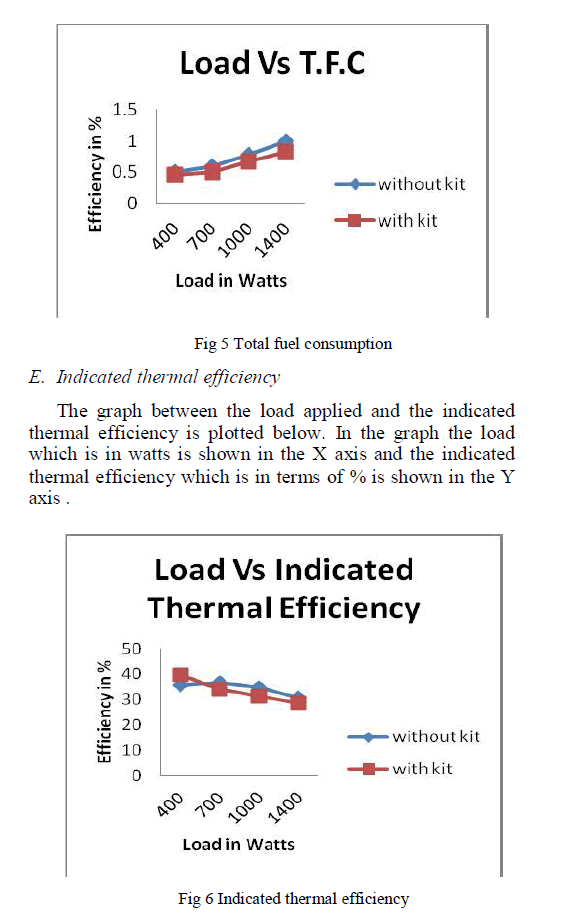 |
| In receiver system have three miscellaneous nodes; they are ZigBee, personal computer [PC] system, communication networks [CN].Here ZigBee are used to receive the data from microcontroller and then it sends the data to PC because it connected to PC. The PC is a normal computer system it have some specific hardware and software; the software are SQL, C#.NET, FTP. The receiving data are comparing with existing data in database using SQL. After comparing the result will send to the controller. If the result is more differ from existing data the emergency alert message is send to the care giver and family members. |
| A. Materials and Methods |
| Here we used load cell sensors for elders monitoring. Those sensors are placed in one model bed. We used PIC 16F877A micro controller for analog to digital conversion. We used HMM algorithm for reduce the data transmission time to care giver and family members. |
IMPLEMENTATION RESULT |
| A. Sensors and Microcontroller |
| The load cell sensors are used in implemented system; they are used to convert the energy form in to signal form. It is a low cost and more flexible so we using load cell sensors. Here we using four load sensors, they are placed in one model bed. The four sensors are placed four corner of the model bed they are connected to microcontroller through the wire. The load cell sensors are predicting the low bit data that’s only we using load cell sensors. Here we using PIC 16F877A microcontroller, it have an inbuilt ADC. The MC receives the data from sensors it is a very low bit rate; the signal cannot be transmit. |
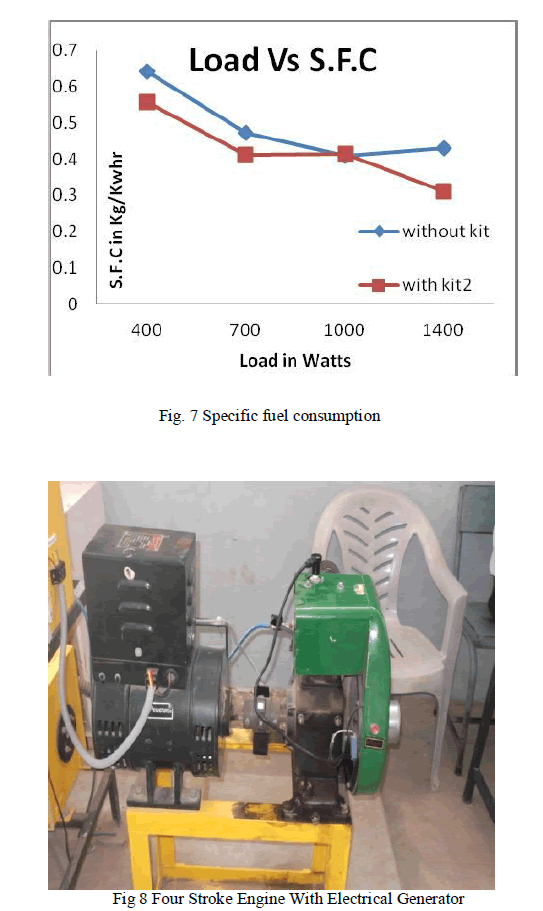 |
| So we need ADC for converting analog signal in to digital signal. Here we use step-down transformer for converting 230v to 12v because the MC need only 2.5v to 5.5v. The step-down transformer connected to rectifier for converting AC to DC; it provides positive DC only. Then the rectifier connected to filter for filtering the noise; it provides pure DC only. Then the filter connected to IC regulator for constant current. Finally the IC regulator is connected to the PIC 16F877A MC. The MC has a input port it receive the signal from sensors through the wire and processed the receiving signal in to digital signal. After converting analog signal to digital signal the data will be transfer to the communication controller through the ZigBee. |
| B. Beck-End and Communication Controller |
| In our implemented system the normal computer system are used for communication controller. The PC has a ZigBee for receiver it receive the data from MC also has a database for storing the existing data. When the system receives the data from MC the receiving data is compare with existing data. Here we use SQL for back end process. The HMM algorithm are used in backend process. A HMM have a threshold value if receiving data value is more than threshold value the abnormal condition will occur. |
| The received value is more than threshold value [it processed on the back end] so the system active the emergency alert. In figure 2.1 illustrate the implemented monitoring result. The status label has a value of sensors monitoring value. In this lave has a four sensors button; they are S1, S2, S3, S4, also has one average box. Here the sensors monitored value is 90kg, 40kg, 30kg, 30kg and the average value is 190. |
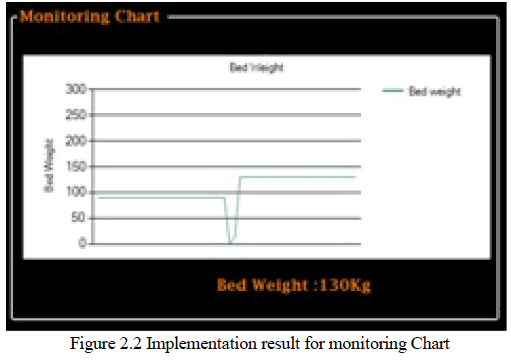 |
| Before start monitoring we gave setup for maximum bed weight and emergency contact details. After start the monitoring the chart was graphed and the chart is varying based on monitoring value. After value is receive the log file was generated, here the log file have a many numbers of values. The monitoring value is grater then HMM threshold value so the alert label active the emergency alert and the elders push the panic button so the panic button also active. In figure 2.2 illustrate the implemented monitoring chart. The monitoring chart draw the graph based on receiving live Value. |
| C. Information sharing |
| After active the emergency alert the system automatically generated the emergency alert message and sends the SMS or E-mail or both to the family members, friends and care giver. Here we used Fling File Transfer [FFT] for upload the elder’s current status in to web page. |
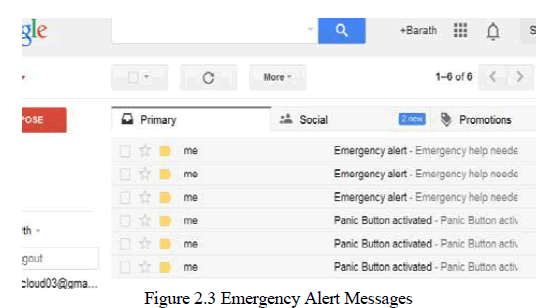 |
| The log files are uploading in to webpage using FFT, every one minute the web page was refreshed. In figure 2.3 illustrate the emergency alert message received by family member. When the care giver receive the text message or E-mail from PC, they was took appropriate action. |
CONCLUSION AND FUTURE WORK |
| A welfare facility for elders system using an optimized number of sensors has been reported. It uses a limited number of sensors; it can provide care for elders and help to determine the living fashion of elderly person living alone. The web page is more useful for working person of elder’s relative and caregiver; they can view the current elder’s status in computer system through the internet in any environment. The text message is useful for all the persons and Caregiver; they can receive the emergency alert message in less time from communication controller to their mobile phones. The system can be simple to install and maintain in any environment. In future, different sensors will be used in a single framework and will provide care to all. |
References |
|